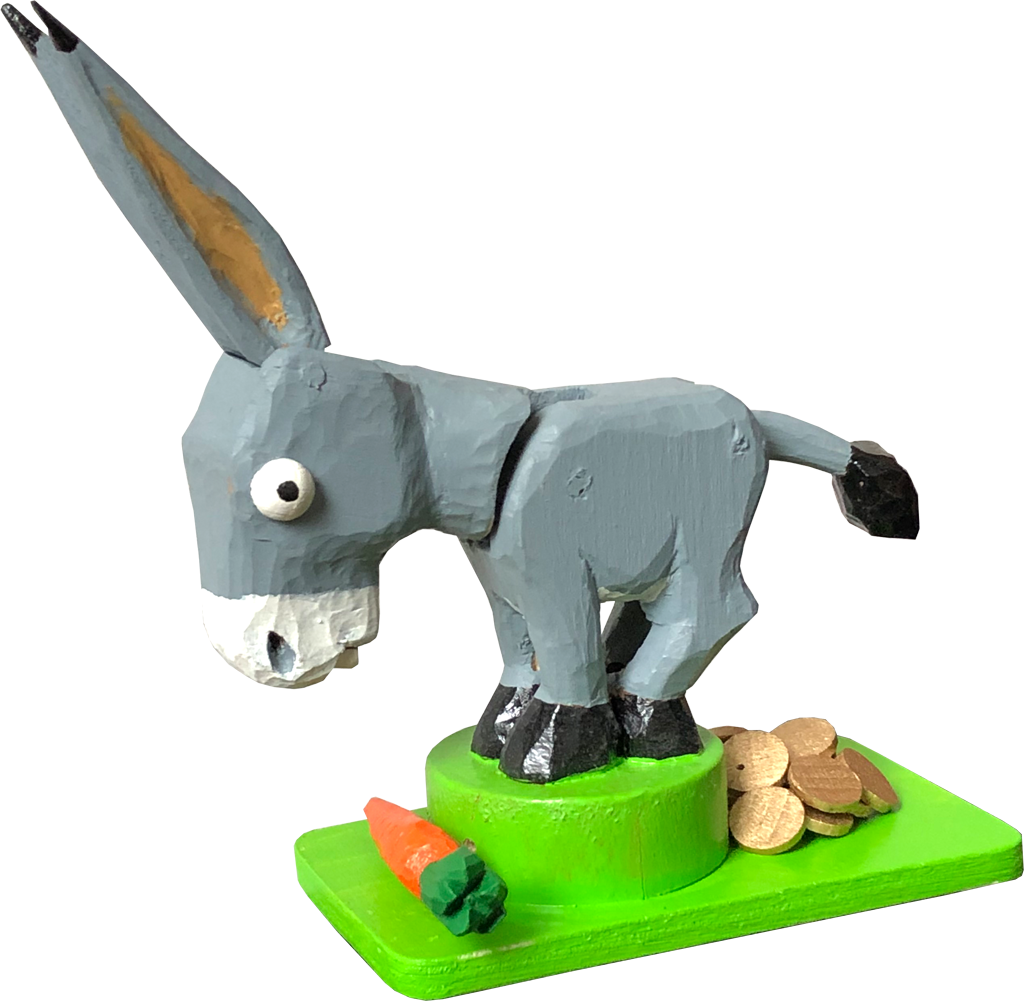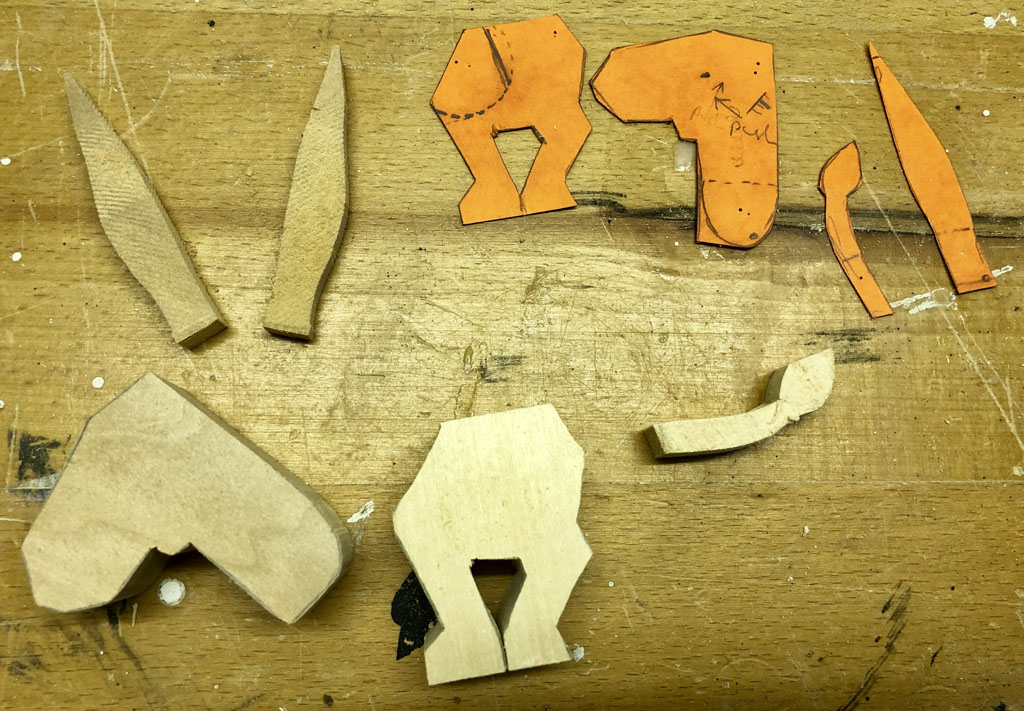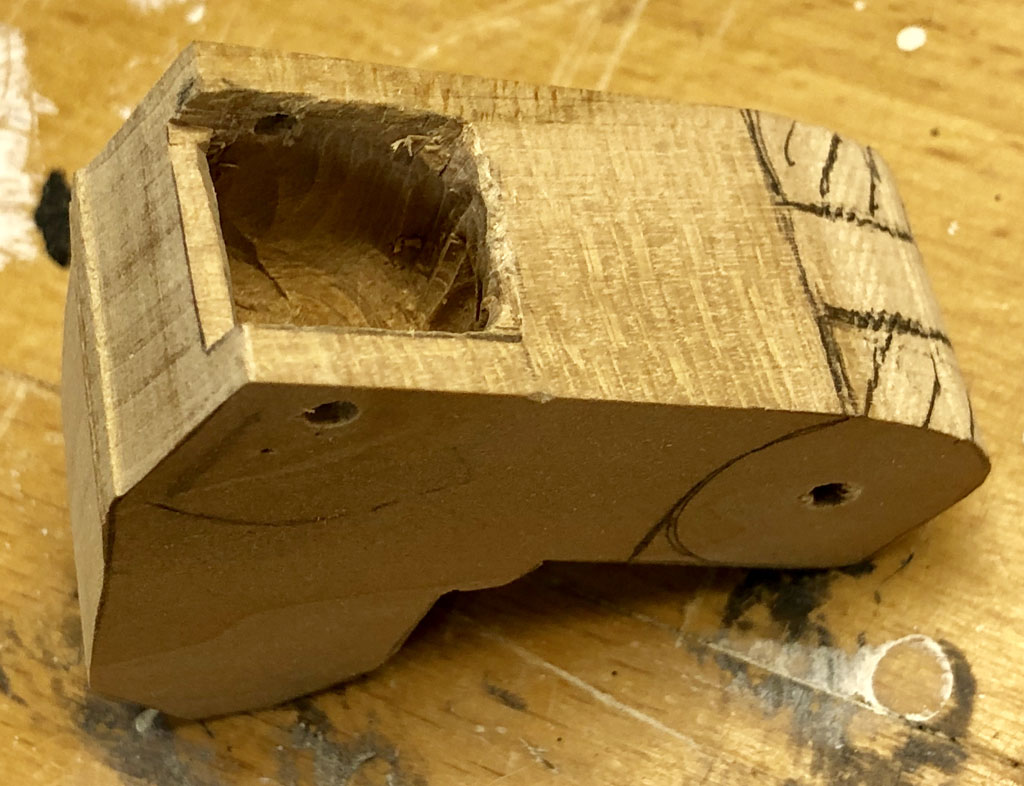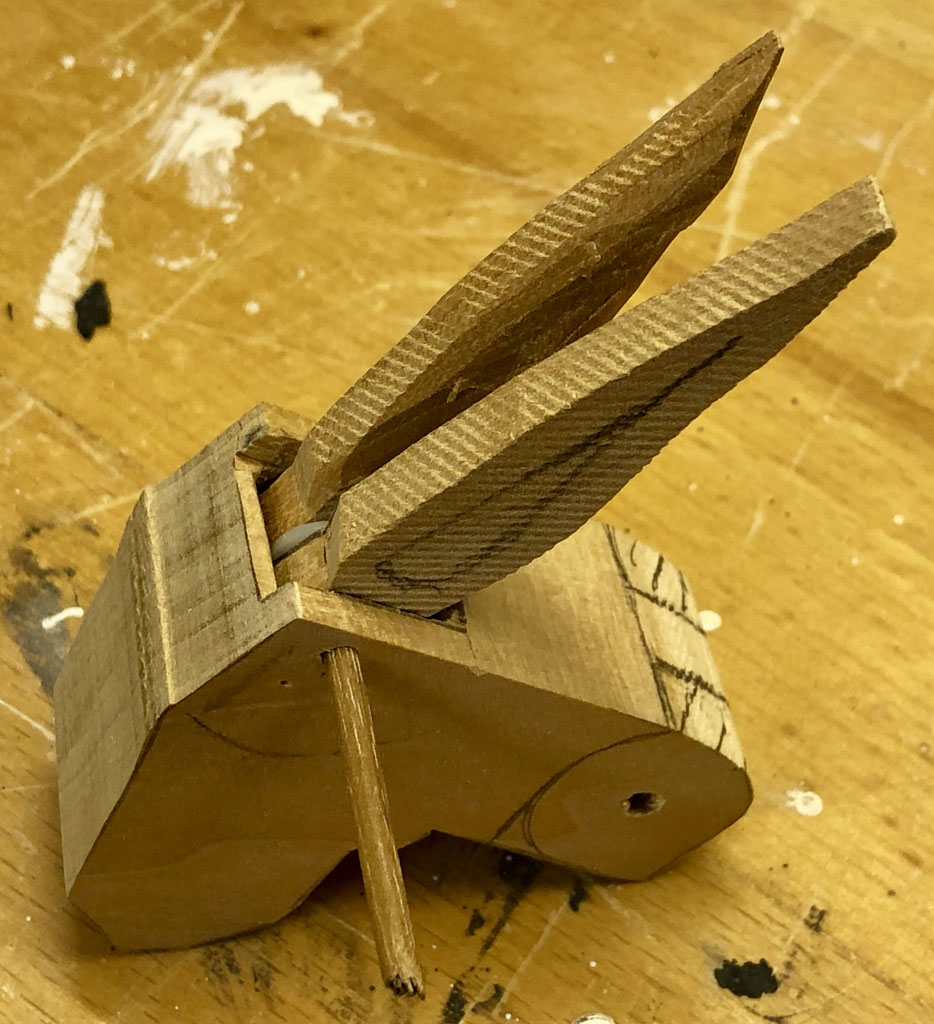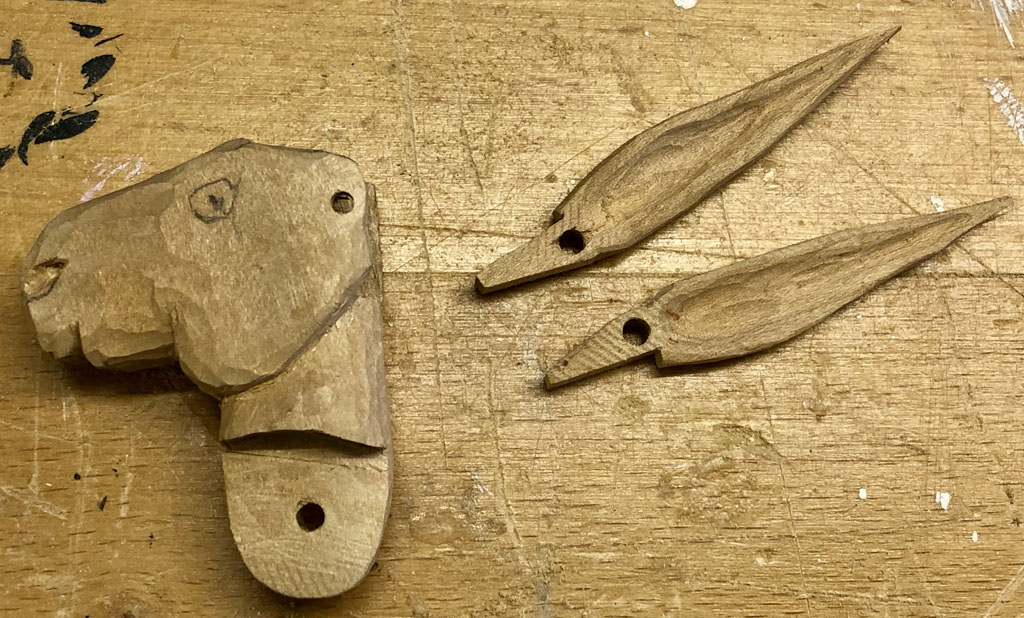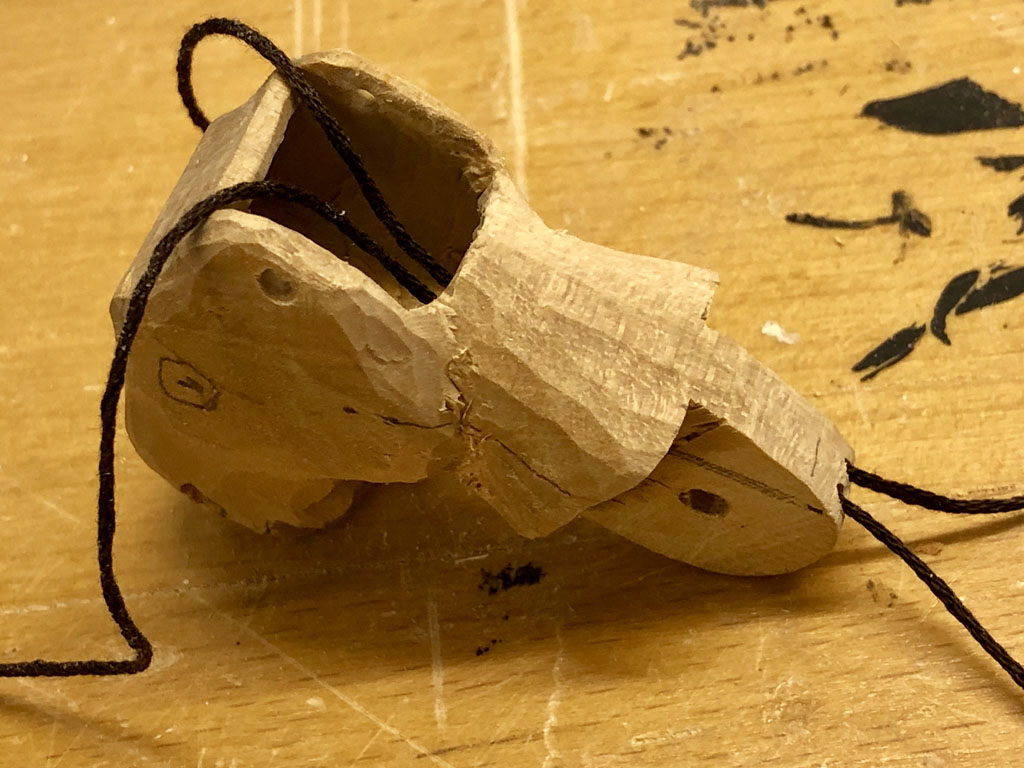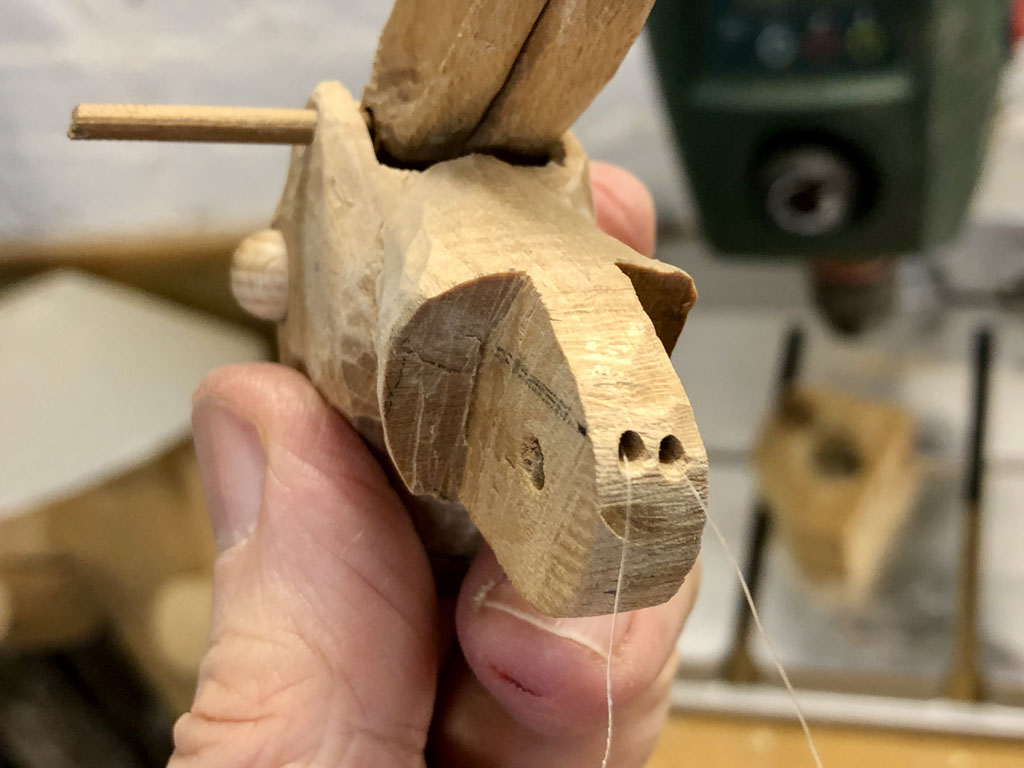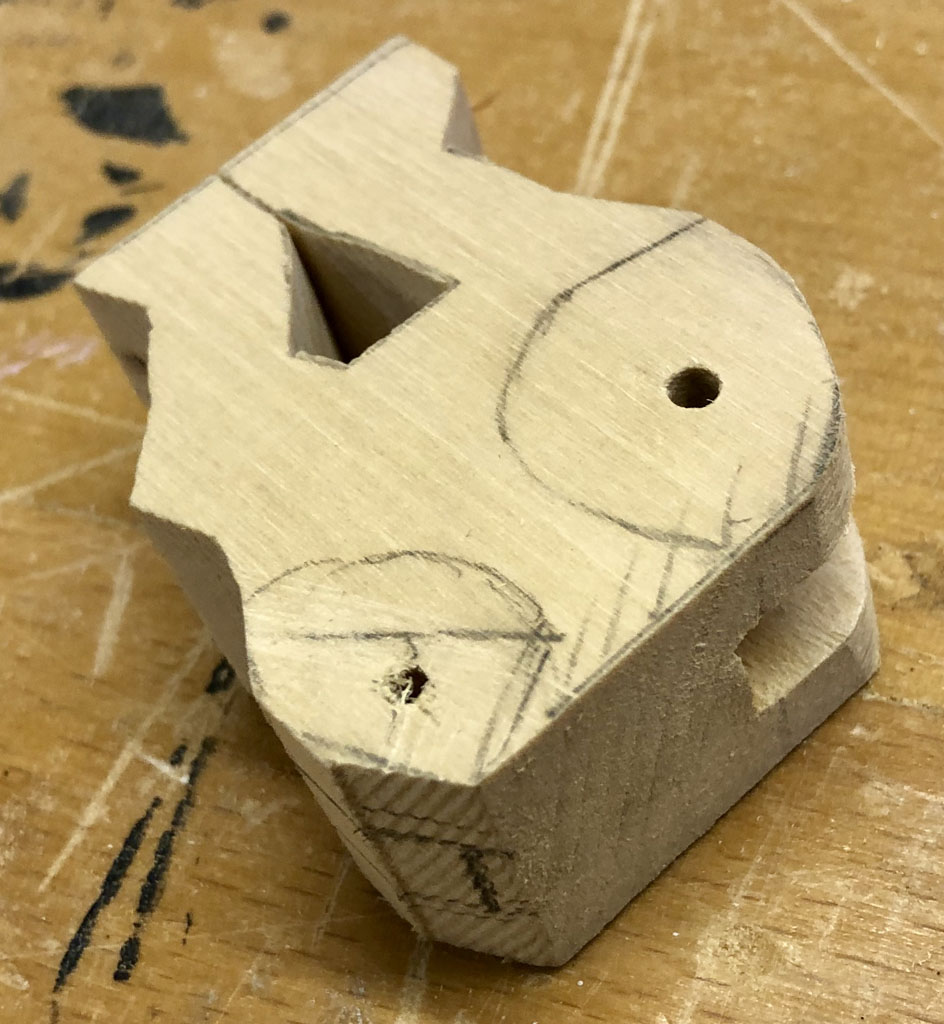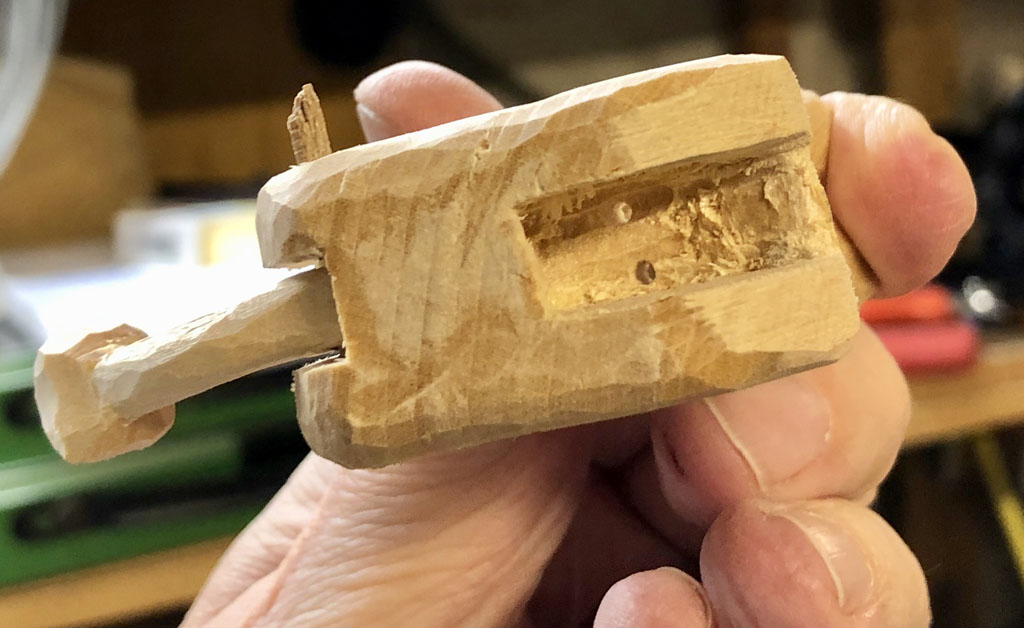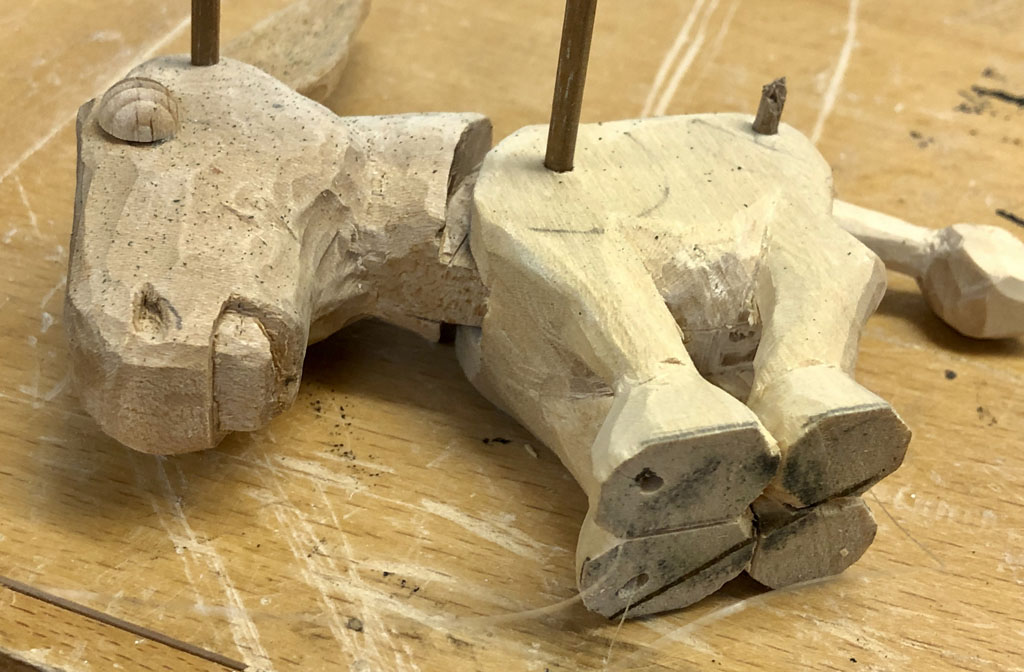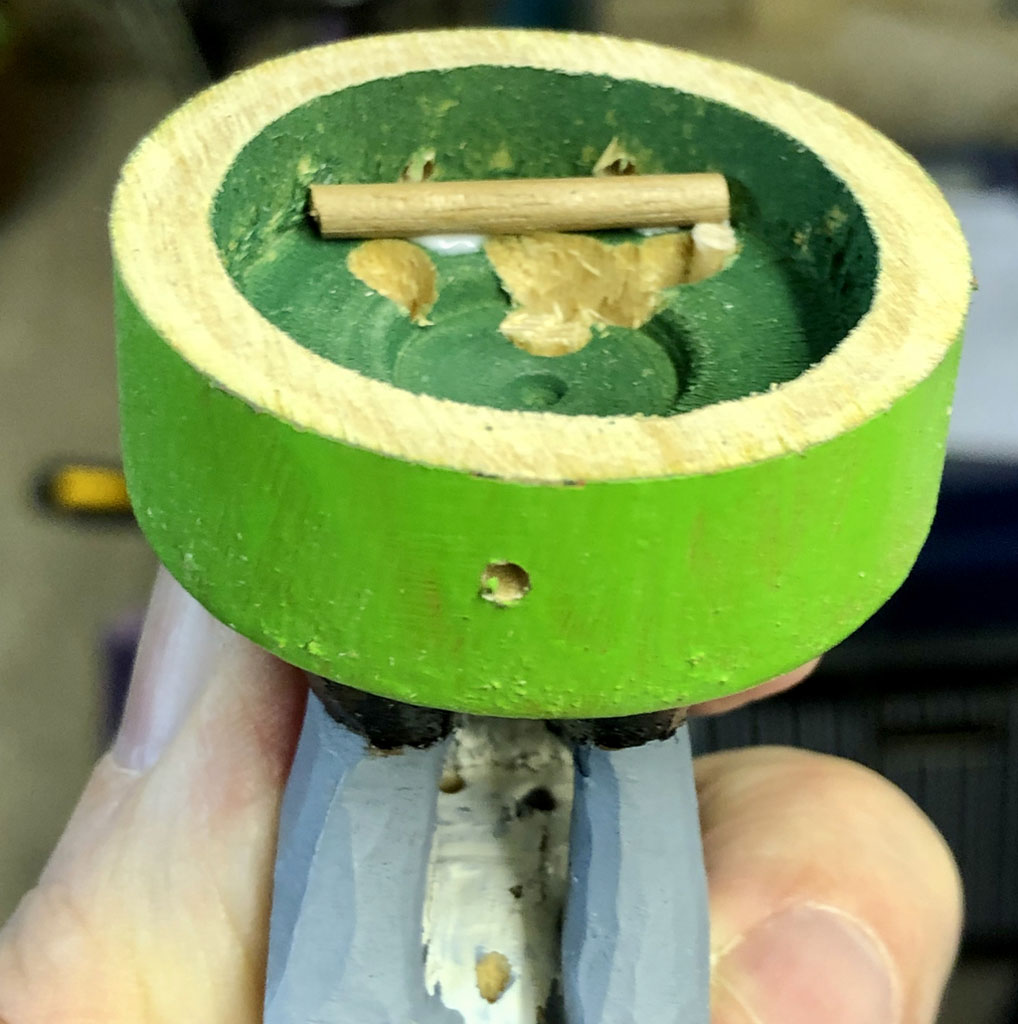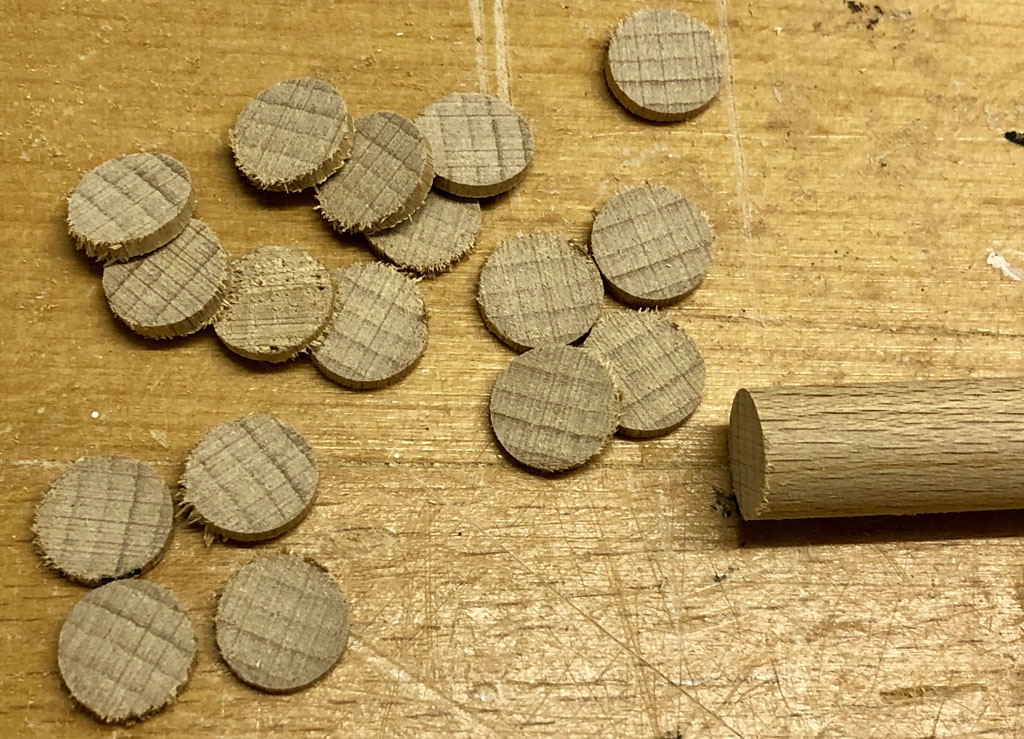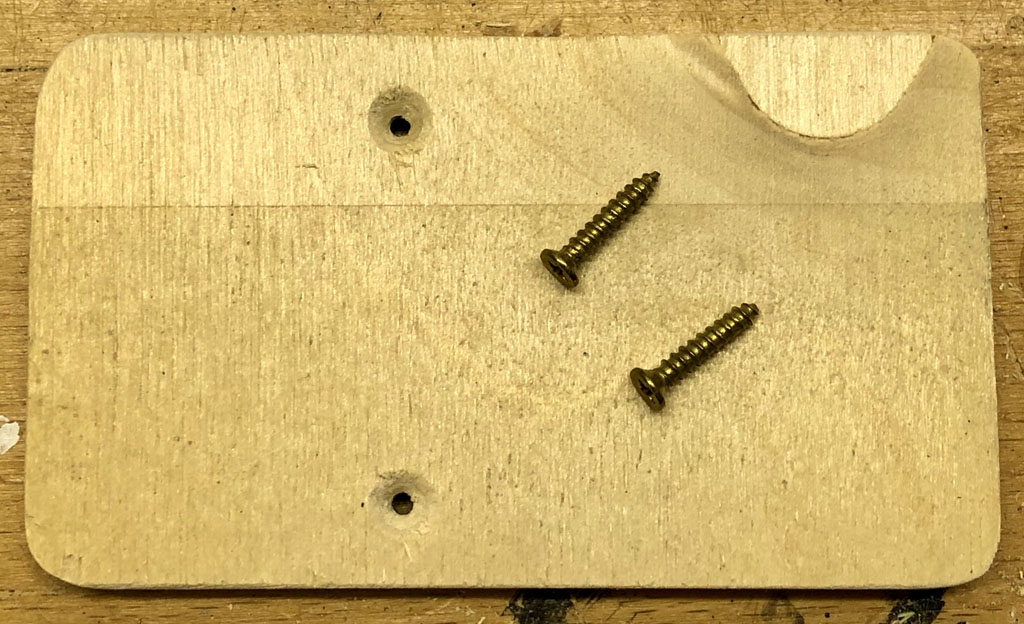Video on Youtube – https://www.youtube.com/watch?v=6_SsgYUONhw
Goldesel plays a role in one of the European fairytales collected by the Brothers Grimm. All you had to do was say the word “bricklebrit” and the magical donkey’s droppings turned to pure gold ducats!
This wooden version of that fabulous animal has its own magic. Touch its single carrot and Goldesel will lift its head in wonder and, delicately used, Goldesel will waggle one of its ears. That can’t compare with the 24 carats heaped at the other end, but if you can find the one special, magical ducat, Goldesel will respond by politely lifting his tail. Unfortunately, so far despite lifting its tail “bricklebrit” doesn’t seem to have the desired effect with my limewood version. Maybe it’s my pronunciation, but I haven’t given up hope yet. Maybe your version will work better?
How to make your Goldesel
Draw one ear, a head, a tail and the body with legs on some stiff card. Bigger heads look cute as they suggest a young animal. Use some pins to try out the movement and work out the best place for each hinge. When you are satisfied, trace the shapes onto wood of the right thickness. At this stage, I actually scroll cut 3 ear shapes, as it looked close enough to a carrot shape to be able to carve it.
Drill two holes through the head for 3 mm dowel. For the hinge between the ears and the head drill the head so that the dowel is a tight fit. For the head to move freely on the dowel in the body, drill a second hole in the neck for a loose fit. Drill the holes where you had put the pins in the card when you checked the movement.
This clever donkey needs a hole chiselled in its head for the ears to move. For the neck hinge, mark the wood that needs cutting away using the cardboard templates to check what needs to be removed before sawing. To cut the arc shape, a sharp chisel is what’s required. Try fitting the ears to see that the hole is big enough for them to move freely.
I left enough space for a small plastic washer between the ears to make sure that they can move separately. Roughly carved, head and ears look like this.
I used cord to waggle the ears and the tail. I tried cotton thread, but that caused too much friction. I tried fishing line, but that was too stiff when relying solely on gravity to pulle the ears down. I finally settled on thinner 1.5 kg nylon cord which is smooth and flexible enough for the job.
Here you can see how I drilled two holes along the neck, one for each ear. Note that routed like this, the cord which pulls the ears up will also pull the head up, when the ear has moved as far as it can.
Here are the thinner, smoother nylon cords, ready to thread through the body.
Now drill two holes in the body for a tight fit to hold the dowel to pivot the head and the tail. Note that it is best to drill the holes while the wood is still solid and the sides flat. That makes it easier to be precise and less likely that thin bits will break off. Then chisel out the space needed for the neck to rotate at the front and for the tail to rotate at the rear. Pencil markings on the outside show roughly how much space is needed for the movement.
Once there is enough space for the neck to move freely, drill two holes through the body for the ear pulls. One hole is enough for the tail.
For the ear pulls, I fed the cords through the front hooves. For the tail pull there was enough space between the two rear hooves
I recycled an old round wooden base for Goldesel to stand on, adding some smooth pieces of dowel to reduce the friction when the cord has to turn through 90 degrees. There are two holes at the front to connect the carrot to the two ear pulls and one hole at the rear to connect a coin to the tail pull.
I’m afraid my gold ducats are only made from beechwood dowel with a lick of gold paint. Go for the real thing if you feel like it!
Carve a carrot and drill two holes in it, one for each ear pull.
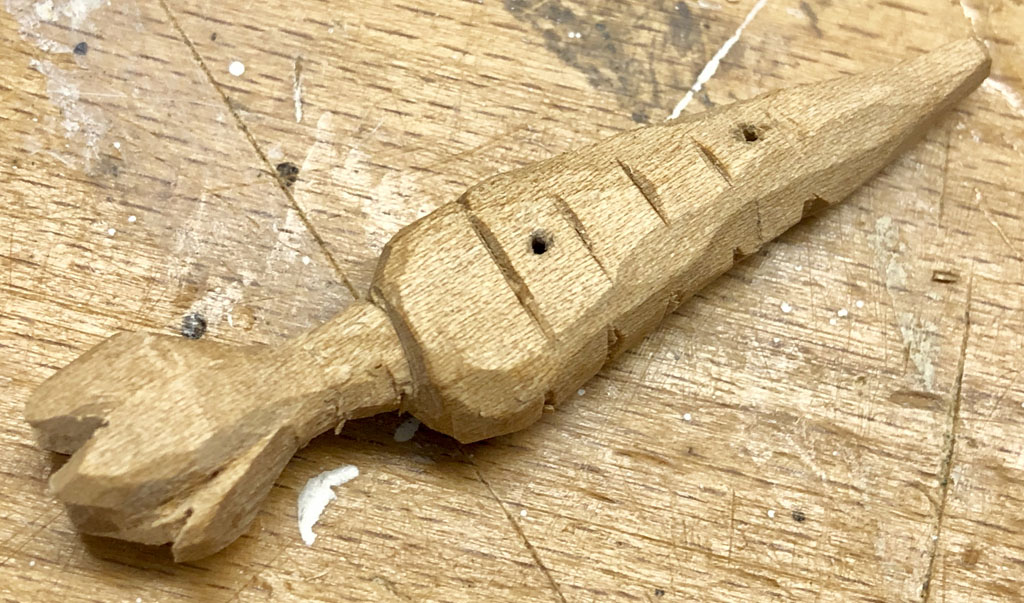 We need a base for the carrot and the ducats.
We need a base for the carrot and the ducats.
Now everything is ready to be assembled. Threading the fine cord can be quite testing and I found press-to-release tweezers quite handy to keep my frustration levels down.
Goldesel was an interesting experiment in using pull cords running inside a figure, like an inside out marionette. Unlike a thumb puppet it has no spring and relies on gravity to move ears, tail and head back to their starting positions. Before demonstrating, it is vital to practise your braying. The onomatopoeias for braying is “hee-haw” or “eeyore.” Curiously the National Geographic thinks that donkeys say “wee-snaw”. As a fan of Winnie the Poo, personally I go for eeyore.
